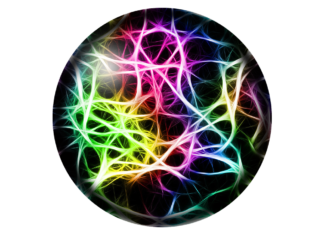Time complexity is a fundamental concept in computer science that measures the efficiency of an algorithm in terms of the time it takes to execute as a function of the size of the input. It quantifies the amount of time an algorithm requires to solve a problem as the input size increases, providing valuable insights into its scalability and performance characteristics. Understanding time complexity is crucial for analyzing and comparing algorithms, predicting their behavior on large inputs, and designing efficient solutions to computational problems.
1. Definition and Basics of Time Complexity: Time complexity refers to the amount of time an algorithm takes to complete its execution as a function of the size of the input. It is typically expressed using Big O notation, which provides an upper bound on the growth rate of an algorithm’s running time relative to the size of the input. Time complexity analysis allows developers to evaluate the efficiency of algorithms and make informed decisions about which algorithm to use for a given problem based on its scalability and performance characteristics.
2. Importance of Time Complexity Analysis: Time complexity analysis is essential for evaluating the efficiency of algorithms and understanding their behavior on inputs of varying sizes. By quantifying the relationship between an algorithm’s running time and the size of the input, time complexity analysis provides valuable insights into the algorithm’s scalability, performance, and suitability for solving specific computational problems. It helps developers identify algorithms that can handle large inputs efficiently and optimize algorithms to improve their performance and reduce their resource consumption.
3. Common Time Complexity Classes: Several common time complexity classes are used to classify algorithms based on their efficiency and scalability. These include constant time (O(1)), logarithmic time (O(log n)), linear time (O(n)), linearithmic time (O(n log n)), quadratic time (O(n^2)), cubic time (O(n^3)), and exponential time (O(2^n)). Each time complexity class represents a different rate of growth in the algorithm’s running time relative to the size of the input, with constant time being the most efficient and exponential time being the least efficient.
4. Factors Affecting Time Complexity: Several factors influence the time complexity of an algorithm, including the algorithm’s design, the nature of the problem it solves, the size of the input, and the efficiency of the underlying data structures and operations. Algorithms with nested loops or recursive calls tend to have higher time complexity, while algorithms that use efficient data structures and algorithms can achieve lower time complexity. Understanding these factors is essential for designing and analyzing efficient algorithms.
5. Best, Worst, and Average Case Time Complexity: Time complexity analysis considers the best-case, worst-case, and average-case scenarios for an algorithm’s performance. The best-case time complexity represents the minimum amount of time an algorithm takes to execute for any input of a given size, while the worst-case time complexity represents the maximum amount of time an algorithm takes to execute for any input of a given size. The average-case time complexity represents the expected running time of an algorithm over all possible inputs of a given size, taking into account the probability distribution of inputs.
6. Analyzing Time Complexity: Analyzing the time complexity of an algorithm involves determining its basic operations, understanding how these operations contribute to the algorithm’s running time, and expressing the algorithm’s overall efficiency as a function of the input size. This process often involves counting the number of elementary operations such as arithmetic operations, comparisons, and assignments performed by the algorithm and expressing the total number of operations as a function of the input size using Big O notation.
7. Trade-offs Between Time Complexity and Space Complexity: In algorithm design, there is often a trade-off between time complexity and space complexity, where improving one may come at the expense of the other. Algorithms with lower time complexity tend to consume more memory or storage space, while algorithms with lower space complexity may require more computational resources and have higher time complexity. Understanding these trade-offs is crucial for choosing the most appropriate algorithm for a given problem based on the available resources and constraints.
8. Techniques for Optimizing Time Complexity: Several techniques can be used to optimize the time complexity of algorithms and improve their efficiency. These include algorithmic optimizations such as reducing redundant computations, eliminating unnecessary iterations, and using efficient data structures and algorithms. Additionally, parallelism, concurrency, and distributed computing techniques can be used to exploit parallelism and concurrency in algorithms, allowing them to execute more efficiently on multicore processors and distributed systems.
9. Practical Applications of Time Complexity Analysis: Time complexity analysis has numerous practical applications in various domains, including software development, computer graphics, artificial intelligence, and scientific computing. It is used to evaluate and compare algorithms for sorting, searching, graph traversal, optimization, and other common computational tasks. Time complexity analysis also plays a crucial role in performance tuning, scalability testing, and capacity planning for software systems and applications.
10. Importance of Continuous Learning and Optimization: In today’s rapidly evolving technological landscape, continuous learning and optimization are essential for staying abreast of the latest developments in time complexity analysis and algorithm design. As hardware architectures evolve, new algorithms and optimization techniques emerge, and computational problems become increasingly complex, developers must continually update their skills and knowledge to design and implement efficient algorithms that meet the demands of modern computing environments.
Time complexity is a fundamental concept in computer science that plays a crucial role in analyzing and understanding the efficiency of algorithms. It measures the amount of time an algorithm takes to execute as a function of the size of its input, providing valuable insights into its scalability and performance characteristics. Time complexity analysis is essential for evaluating the efficiency of algorithms, predicting their behavior on large inputs, and designing optimal solutions to computational problems. By quantifying the relationship between an algorithm’s running time and the size of the input, time complexity analysis helps developers make informed decisions about algorithm selection, optimization, and implementation.
Time complexity analysis considers the worst-case scenario for an algorithm’s performance, providing an upper bound on the amount of time it takes to execute for any input of a given size. This worst-case time complexity, often expressed using Big O notation, represents the maximum amount of time an algorithm takes to complete its execution for any input of a given size. For example, an algorithm with a time complexity of O(n^2) would take at most n^2 units of time to execute on an input of size n. By focusing on the worst-case scenario, time complexity analysis ensures that developers can anticipate and account for the maximum possible time required to execute an algorithm, even under unfavorable conditions.
Time complexity analysis also considers the average-case scenario for an algorithm’s performance, providing an estimate of its typical behavior over a range of inputs. The average-case time complexity represents the expected running time of an algorithm over all possible inputs of a given size, taking into account the probability distribution of inputs. While the worst-case time complexity provides an upper bound on the algorithm’s running time, the average-case time complexity provides a more realistic estimate of its performance in typical usage scenarios. By analyzing both the worst-case and average-case time complexity of an algorithm, developers can gain a comprehensive understanding of its efficiency and behavior across a wide range of inputs.
In addition to worst-case and average-case time complexity, time complexity analysis may also consider the best-case scenario for an algorithm’s performance, representing the minimum amount of time it takes to execute for any input of a given size. While the best-case time complexity is less informative than the worst-case or average-case time complexity, it can still provide valuable insights into the algorithm’s behavior under ideal conditions. For example, an algorithm with a best-case time complexity of O(1) would take a constant amount of time to execute regardless of the input size, indicating that it performs optimally in certain situations. By considering the best-case, worst-case, and average-case time complexity of an algorithm, developers can gain a comprehensive understanding of its efficiency and behavior across a wide range of scenarios.
Time complexity analysis involves evaluating the efficiency of algorithms by quantifying the relationship between their running time and the size of the input. It provides valuable insights into an algorithm’s scalability, performance, and suitability for solving specific computational problems. By analyzing the worst-case, average-case, and best-case time complexity of algorithms, developers can make informed decisions about algorithm selection, optimization, and implementation, ensuring that their solutions are efficient and effective in real-world usage scenarios. Time complexity analysis is a critical tool in the toolkit of every software developer, enabling them to design and implement algorithms that meet the demands of modern computing environments and deliver optimal performance for a wide range of applications.






















